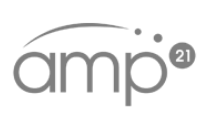A Math Curriculum for Today’s Students
AMP21’s innovative approach blends mathematics and real-world problem contexts to deliver an exciting new math curriculum that improves students’ aptitudes and attitudes towards mathematics.
Created by faculty from education, engineering, and business, AMP21 is designed to help students think critically and develop a problem-solution mindset, using algebraic modeling and probability in a project-based learning environment.
AMP21 is Great in a Variety of Contexts!
Decision Making
Decision Making
Decision making is the unifying theme that runs through all examples in both the middle school and high school curriculum. Whether it is percentages or rates for middle school or systems of equations and probability for high school, each scenario uses these mathematical tools to evaluate alternative decisions and determine the best. When the best decision is the goal of the mathematical exercise, students will not ask “When will I ever use this?” because the answer is obvious.
Analytics Revolution
Analytics Revolution
AMP21 curriculum is representative of the growing field of analytics. All AMP21 scenarios use data and mathematics to aid in decision making. The middle school mathematics focuses on percentages and rates and is primarily descriptive and predictive analytics. The high school mathematical modeling with probability takes analytics into the realm of uncertainty. The mathematical modeling with algebra focuses on prescriptive analytics as it provides tools for finding solutions for improving or optimizing performance.
College Preparation
College Preparation
Over the past decade, many colleges and universities have changed their general education requirements away from mandating students take an algebra-based course in the mathematics department in favor of courses that focus on developing quantitative reasoning skills that are taught in a variety of departments. Teaching O.R. modeling in high school reflects this shift to making learning more relevant and engaging. For students who are going to pursue business, management, administration, engineering, or public policy, learning O.R. techniques is excellent preparation for their eventual college majors.
Diverse Student Needs
Diverse Student Needs
Whether your student loves math and is looking for a new challenge or they struggle with traditional math curriculum, AMP21 can assist in providing an engaging and motivational mathematics experience. Students from diverse backgrounds and math experiences can benefit from the real world scenarios of AMP21 problems. Using collaboration activities and Excel tools, they will find new ways to explore mathematics, probability, and algebra. Struggling students will find math that is relevant to their everyday lives, while students who enjoy mathematics will see how they can use their interest and skill in mathematics beyond academic settings.
The Problem with Traditional Math Curriculum

All too often, problems from middle and high school mathematics books speak of “real-world” problems, but realistically describe nothing more than what can be seen, touched, or simply measured. Many textbooks still use contexts that would have been equally relevant 150 years ago; comparing heights and shadows of people to flagpoles; filled with people and/or vehicles traveling at different speeds who are either on a path to collide or pass. They don’t have more than one solution or allow students to interpret results, making it difficult for students to practice they ways that they will use math outside of the classroom. Questions are predictable with answers that are known and many don’t actually need math to solve them. This leaves students disengaged and bored.
The AMP21 approach is different. Its curriculum is designed to have decision contexts with current relevance to students so that they can better engage and apply mathematics principles both inside and outside the classroom. As a result, the problems in the AMP21 curriculum offer opportunities for students to discuss aspects of the problem beyond just how to find one right answer.
AMP21 to the Rescue!
To develop applied mathematical modeling skills, problem contexts must be authentic. At AMP21, we strive to develop problem contexts that:
- Problems are set in authentic, familiar contexts and frequently have more than one good solution – just like real world problems.
- Problems often involve interpretation of results and analysis of the strengths and weaknesses of a good solution.
- Problems do not restrict numbers, whether givens or solutions, to integer values.
- Curriculum allows for student collaboration, and requires student reflection on the problem and its solution.
- Curriculum support all 8 of the Standards for Mathematical Principles (SMP)
By defining authentic problem scenarios in real-world terms, the application to real life is simple. AMP 21 problems are designed to encourage student consideration of a myriad of different professions, all of which can be improved through mathematics. Additionally, these solutions can be used in real life situations, unlike many of the standard mathematics you find taught in schools today.
Middle schoolers may work on a multi-faceted plan of chores in order to earn enough money to buy a popular new game while high school students use quantitative analysis to choose a wireless plan, select a college, or even buy a used car. Outside of personal decisions, students are introduced to decisions involving running a business, making healthy eating choices, maximizing profits of diverse products, or scheduling patients in a medical clinic.
Whether you wish to run a full year course, or even to place some of our unique problems into your current course, AMP21 has solutions for you. Liven up your classroom with problems that inspire critical thinking, decision making, and discussion through a project-based learning approach to mathematics!
Teachers Love AMP21
Marianne S. – Macomb County, MI
AMP 21, at the middle school level, doesn’t require the students to know algebra to partake in the problems. Miraculously, the students learn the language of algebra, and why it is necessary, as they walk through the different scenarios and determine methods of solving. They learn to interpret graphs, collect data, analyze data, and use it in a decision making model that may involve business, sports, technology, or many other real-world scenarios.
D.N. – Macomb County, MI
I enjoyed understanding the importance of real world problems. The students connect to realistic problems and actually want to search out the answer. This helps engage them in math. It has really made me rethink and rewrite many of my test and homework questions.
Amy Springstead – San Dieguito, CA
It is less about the specifics of algebra and more about the problem solving and algebraic thinking that students need. I had students of all mathematical backgrounds, from currently taking Algebra 2 to a student who had already taken AP Calculus AB. I appreciated that the students balanced each other and provided different perspectives and learning style - from more artistic students to those who are mathematically minded.
Thad Wilhelm – Birmingham, MI
I have been teaching traditional high school classes for two decades. I enjoy teaching about algebra and geometry, but no classes are more fun to teach than the O.R. modeling courses. Students all have experiences to draw on as we develop mathematical models for the real-world decisions we make. There are great discussions about assumptions we make while modeling, how decisions would be implemented in the real world, and how our decisions would change if some aspect of the problem changed.

View More Details about AMP21 Textbooks
Buy the Book Today!

